How To Clean Fiberglass Bathtub Stains
There's a joke about baths and towels, and it goes like this: if taking a bath or shower makes your body clean, then why is your towel always dirty? And while there's probably a scientific explanation, your bath-time habits are a blight on your bathtub and shower caddy.
Fortunately, cleaning the tub doesn't have to be difficult or dramatic. You just need the right tools or cleaning products – and a lot of them are good for the environment. So before you sink your toes into a grimy tub, let's look at some top tips for cleaning a fiberglass shower.
1. Confirm it's fiberglass

Bathtubs and showers are typically white and shiny, but they're not all made of the same material. It could be ceramic tile, stone slab, porcelain, acrylic, fiberglass, or enamel. The last four look a lot alike, but you can tell them apart with careful observation … and a fridge magnet.
Acrylic is stretched out plastic, sometimes reinforced with fiberglass, so plain fiberglass looks 'glassy; while acrylic looks more 'plasticky'. Natural stone – even when polished – doesn't shine as much as fiberglass, while porcelain is heavier and chunkier because it has a cast iron base.
And although porcelain tubs and showers do have metal beneath, they're thoroughly coated, so they don't respond to magnets. On the other hand, fridge magnets easily stick to your enamel walls, so that's a good 'tell'. Whichever material you shower is made of, avoid harsh chemicals.
2. Identify the stain
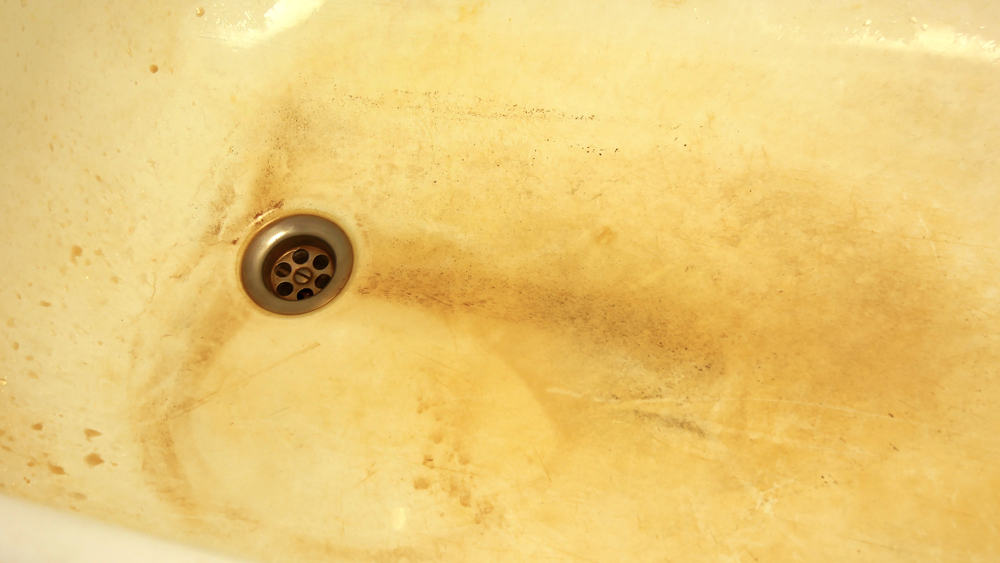
Unlike the other common shower and tub materials, fiberglass has a glass base – hence its name. Fiberglass is melted sand, treated in extreme heat, then mixed with resin. Like all showers, it can accumulate mold, limescale, rust, and stains from acidic beauty products.
Soap scum is another bathroom hazard. It forms in little puddles and spills and can be quite stubborn when it accumulates because soap has a greasy-oil base. Typical soap is made by treating fats and oils with high-pressure steam, then purifying, distilling, and adding alkali to it.
Other items that can stain your fiberglass showers include make-up, hair products, spilled medicine, bath bombs, laundry detergents, toilet spray, and kids. The latter are their own special category because they could invade the bathroom with anything from crayons to cookie crumbs.
3. Wipe it while it's hot

Many shower stains are made from the grimy residue of sebum, cleaning products, and organic dust. That's why it's easier to clean when the bathroom is steamy. The heat and water vapor soften fatty dirt, so a lot of it wipes right off. But not everyone scrubs their walls after a shower.
An alternative method is to run the shower at its hottest for two to five minutes. This steams the shower beautifully, meaning you need less elbow grease. You can also choose to heat your cleaning fluid in the microwave for a minute or two. But be careful if it's a frothy cleaner!
4. Avoid abrasive pads
When you see those icky stains and brown marks, your instinct is to attack your shower walls with steel wool, rough brushes, and harsh scrubbers. One YouTuber even suggests scraping off your soap scum with a razor blade. Here's why we think that's a bad idea – it's fiberglass.
Think about it. Fiberglass is commonly used in cars (and swimming pools, and bulletproof vests). Would you want a razor blade anywhere near your car? The thought itself is nightmare-inducing. So keep sharp, rough, abrasive items and scouring pads far from the shower.
5. Stay away from bleach
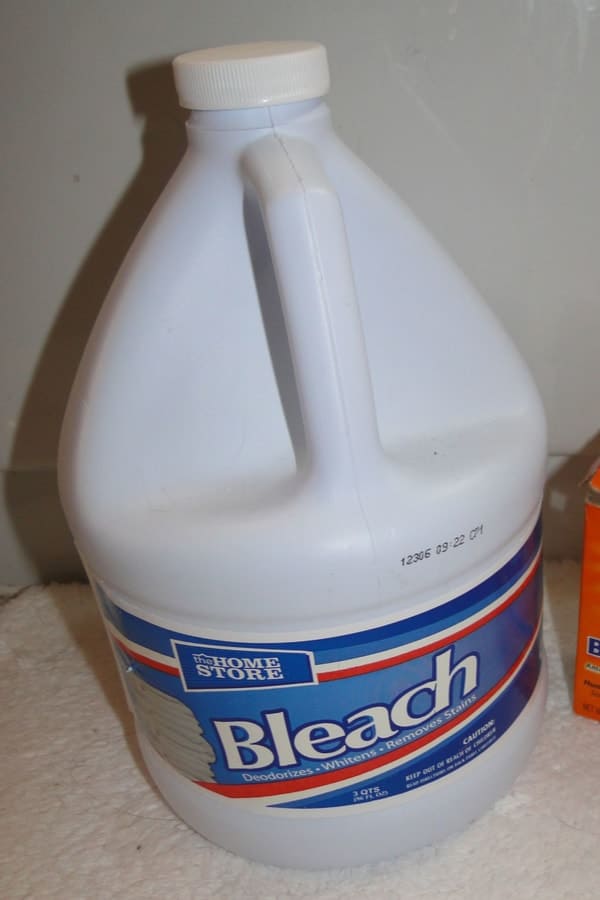
You already know bleach can irritate your skin and lungs, especially in high concentration. At best, you'll feel itchy and your eyes will redden. At worst, you'll pass out. But bleach can also ruin the resin in fiberglass, so you don't want to be scrubbing it onto tubs or your shower walls.
Ammonia is safe on fiberglass though, so it's a viable option. It's especially good at getting rid of watermarks. Be careful though – inhaling excess ammonia can be just as bad as breathing in bleach, so dilute the ammonia in lots of water, and make sure the room is well ventilated.
6. NEVER combine commercial products
Many home cleaning products are a mix of this and that. You combine things like essential oils, fermented fruit rinds, and corn starch. But you should never mix store-bought cleaning fluids because their ingredients often react badly. Results can be toxic or even explosive!
When you're making a home cleaning remedy, it's probably a mild acid and a mild alkali. Their chemical response to each other forms a fizzy foam that is slightly abrasive but safe. These mixtures should be used immediately after mixing before the fizzing fades away.
7. Use plain vinegar
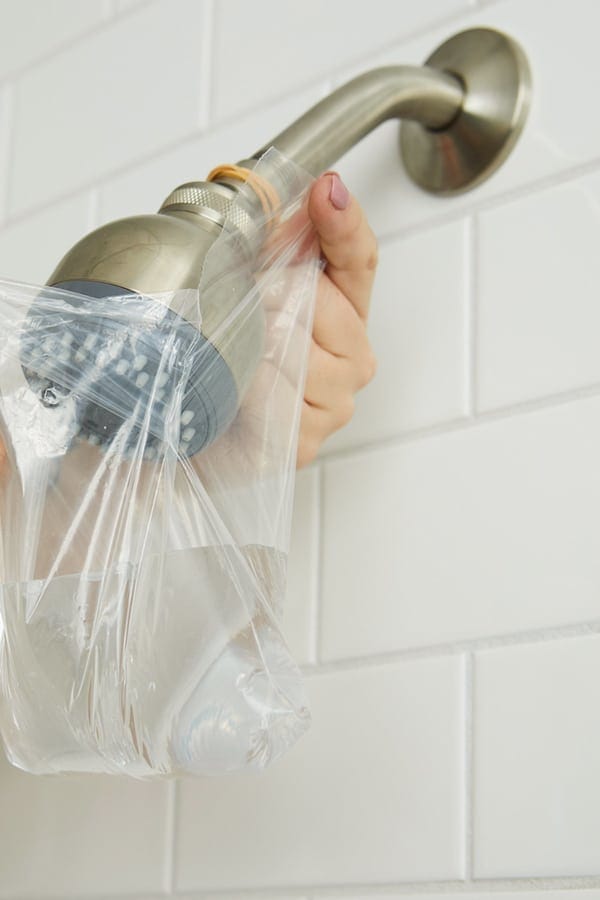
Mild acids are great for soaking up the oil-based dirt found in most showers. White vinegar is a popular choice. Mix some with warm water in a spray bottle, then sprinkle it over your steamy shower walls. Let it sit for ten minutes to half an hour, depending on how dirty your shower is.
You can then run the shower again, to moisten the mess, then wipe off all the gunk. Vinegar works especially well for a rain shower head or even a regular shower head. Fill a plastic bag with vinegar, then tie it to the showerhead with a shoelace or rubber band. Leave it overnight.
8. Mix your vinegar (or baking soda) with dishwashing liquid
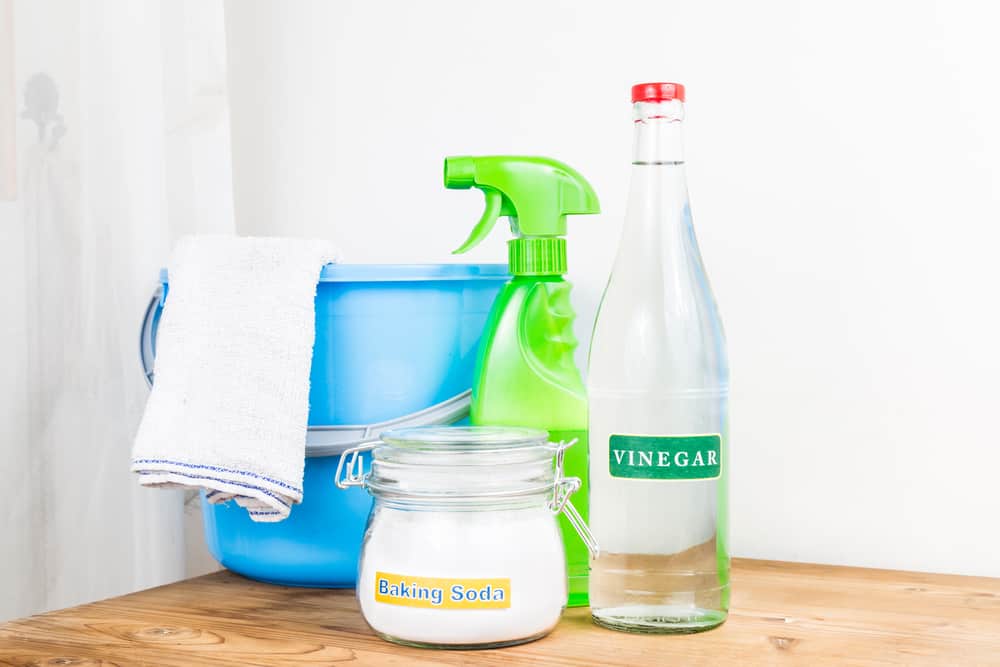
When plain vinegar doesn't do the trick, add a few drops of any mild dishwashing liquid, such as Dawn or Morning Fresh. You can replace white vinegar with any mild household acid, such as apple cider vinegar or hydrogen peroxide. The dishwashing soap adds to the foam in your soap.
Foam is good because its bubbles loosen stains and lift grimy dirt particles to the surface, where you can easily wipe them off. If you've unexpectedly run out of household acid, try spraying warm water mixed with a few drops of dishwashing liquid. The longer it sits, the better it cleans.
An alternative combination – when you don't have vinegar handy – is to mix your dishwashing liquid with a teaspoon or two of baking soda. It makes the mixture a little more abrasive, so you can rub off grimy stains without scratching your fiberglass surfaces. Rub using circular motions.
9. Mix your vinegar with baking soda
You don't want to scrub your fiberglass walls or scrape the shower door, because it can leave scratches. So instead, try making an abrasive paste by mixing vinegar and baking soda. The thicker your paste is, the more effective it will be. But it's not practical to mix large batches.
For this reason, make about a quarter cup or half a cup of paste, apply it directly on the stain, and let it sit as long as needed. This could be anything from thirty minutes to overnight. Rub it in if you need to. Once it's set, rinse it with clean water, or wipe it off with a damp cloth.
1o. Use a truck degreaser
As we pointed out, fiberglass showers are made from the same material as many modern cars, and bathroom stains have an oily undertone. So it makes sense a product that gets grease off trucks would be effective on a fiberglass bathroom. This led a YouTuber to try Mighty Boss.
It seems to work instantly, soaking up grimy scum and letting it wipe off with very little effort. Your bathroom walls will be spotless in minutes, though you can let it sit longer if the stains are particularly stubborn. For best results, use a spray bottle directly on steamed up shower walls.
11. Warm and cold rinse
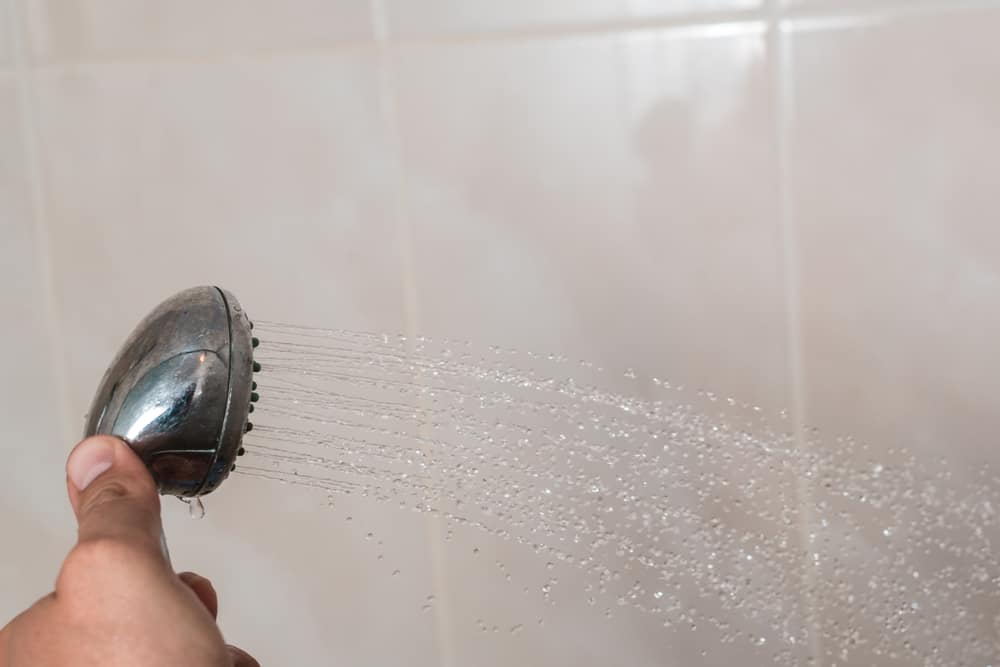
Once your chosen cleaning material has achieved the desired effect, run the shower again, to build up clean steam. You can then douse the walls using a handheld showerhead, a garden hose, or a spray bottle filled with clean water. A warm rinse will loosen any oily residue.
Follow with a cold rinse to wash off all the soap. Then, to prevent watermarks, wipe the walls with a clean, soft, lint-free rag. Microfiber works best. Finally, run your bathroom fan, or open the window, so that any moist air is expelled, preventing the accumulation of damp and mold.
Spotless fiberglass showers
Fiberglass is a popular material for showers and tubs because it's cheaper. It's as shiny as porcelain and marble, more long-lasting than acrylic or enamel, extremely lightweight, and comes in stylish versatile molds. Here are some cleaning tips:
- Avoid harsh chemicals, especially bleach.
- Abrasive pads and scourers should be avoided too.
- Use mild, household acids like vinegar and hydrogen peroxide.
- For abrasive effects, mix your mild acid with baking soda and dishwashing soap.
- Leave your cleaning paste overnight, then wipe it off and rinse with cold water.
How sparkly is your fiberglass shower? Show us some photos in the comments!
How To Clean Fiberglass Bathtub Stains
Source: https://www.sunrisespecialty.com/how-to-clean-fiberglass-shower
Posted by: carterseethe.blogspot.com

0 Response to "How To Clean Fiberglass Bathtub Stains"
Post a Comment